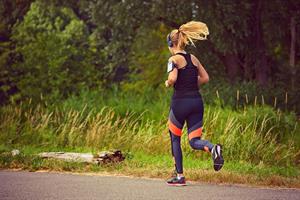Returning to running following an injury
In our clinic, we see a wide variety of running-related injuries, from total beginners to experienced marathon runners. In this blog post I am going to talk about the steps that you can take to ensure that you return to running in the safest, most efficient and pain-free way.
START SLOWLY
Walking is the stepping stone in the return to running. Due to biomechanical complexity of the running gait and the compressive forces that occur, the return to running is a gradual process. In the early stages of the recovery process, I commonly advise that patients temporarily keep their cardiovascular fitness going through a lower impact method, such as swimming, stationary cycling and walking. Once the injury is at the end-stage of healing, I advise the following shown below:
STAGE 1: EARLY STAGES ONCE INJURY IS MOSTLY RECOVERED
· Begin on even ground and a flat route and go for a daily walk at a moderate pace (keeping it within up to an hour)
· Progress to a route that involves some hills and uneven ground (this will start to condition the muscular structures that are vital for an efficient running gait
STAGE 2: INTRODUCE A RUN
· I tend to advise on the walk/run ratio method. Initially, start with the format of run for one minute and walk for two minutes at time and make sure you have a rest day in between each run/walk session. With every session, build up the periods of running and reduce the periods of walking gradually. Continue until approximately 20 minutes of gentle and paced running is comfortable
· Gradually build up the pace and distance on the flatter running routes. Once this is achieved, introduce routes with hills.
IMPORTANT THINGS TO REMEMBER
· Stretching is key. At least 5-15 minutes of stretching is advisable after a run, in order to prevent injury reoccurrence. Stretch the “big three”: quadricep, hamstring and calf muscles
· Consider occasional sports massages of these muscles for further injury prevention
· Don’t avoid rest days. They are crucial for allowing your muscles to adapt and recover

